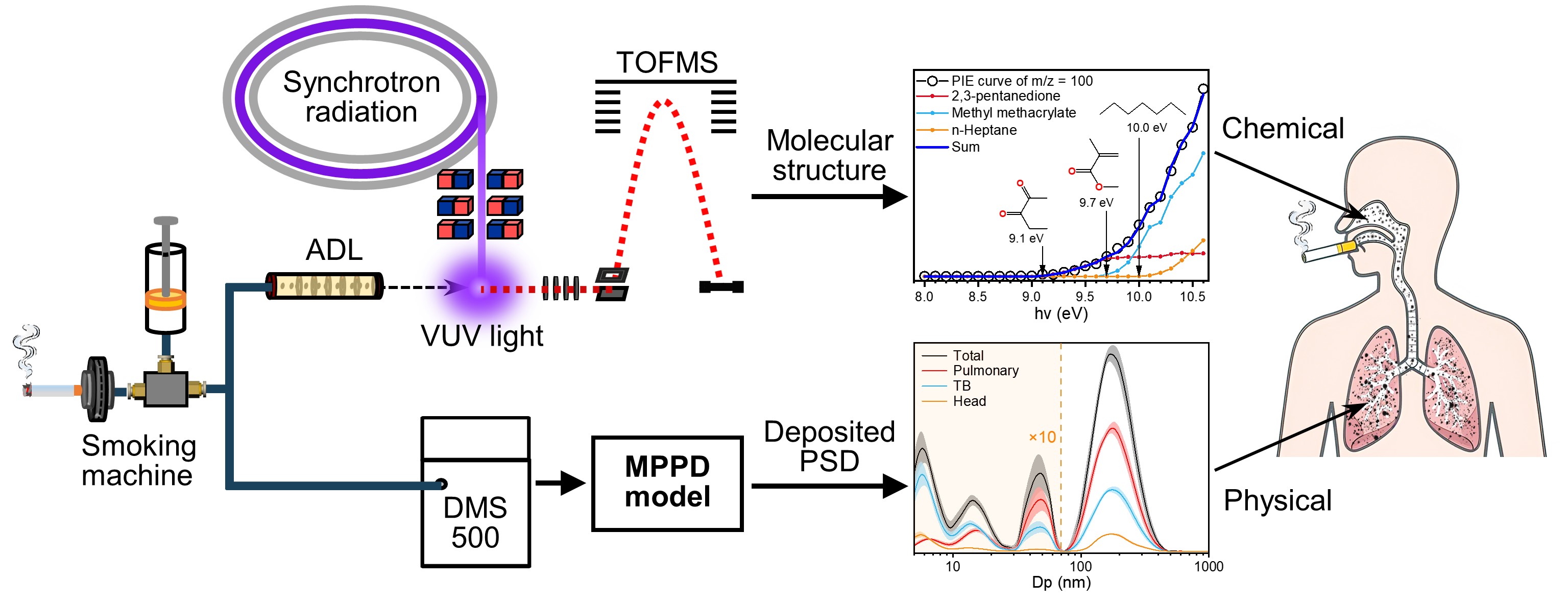
Recently, a research team from the Hefei Institutes of Physical Science of the Chinese Academy of Sciences, achieved the first online isomer-specific differentiation of cigarette smoke aerosols, providing a new scientific basis for evaluating cigarette smoke exposure risk.
Their findings were recently published in Journal of Hazardous Materials.
Cigarette smoke aerosols pose a serious hazard to human health, and their particle size distribution, concentration, and chemical composition are the central factors influencing exposure risk.
In this study, the team used a fast-response analyzer to measure the particle size distribution of cigarette smoke as the smoke was generated. They also used a model to predict how these particles settle in different parts of the respiratory system.
To further reveal the chemical makeup of cigarette smoke, the researchers combined their self-developed Vacuum Ultraviolet Photoionization Aerosol Mass Spectrometer with the Hefei Synchrotron Radiation Facility. This combination made it possible to identify and differentiate between different structures of toxic molecules in cigarette smoke for the first time.
The results showed that a single puff of cigarette smoke can release up to 1010 particles, including 109 particles smaller than 70 nanometers, which mainly deposit in the tracheobronchial region.
The team also detected a range of hazardous substances such as carbonyl compounds, alkaloids, polycyclic aromatic hydrocarbons, and organic acids.
"Our research provides a new scientific insight into assessing the exposure risk of cigarette smoke,” said Prof. TANG Xiaofeng.

Online Characterization of Particle Size Distribution and Molecular Structure of Cigarette Smoke Aerosols. (Image by ZHAO Feng)